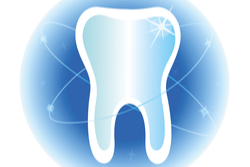How Dietary Sugar Intake Can Disrupt Memory Function
 New research from the University of Georgia has shown that daily consumption of high sugar content in beverages consumed by adolescents has impaired performance on a memory and learning task during adulthood.
New research from the University of Georgia has shown that daily consumption of high sugar content in beverages consumed by adolescents has impaired performance on a memory and learning task during adulthood.
It is known that children consume the highest levels of added sugar to their diet. This has been linked to health affects relevant to heart disease, obesity and even loss of memory function. But it is not known how this affects children during the development of the region of the brain known as the hippocampus. The hippocampus is specifically important for memory and learning.
The team used mice in their study and found that changes in the gut bacteria, known as Parabacteroides showed memory deficits. The team enriched the levels of Parabacteroides in the mice, experimentally. They found that the mice performed worse depending on the higher levels of Parabacteroides. Consuming sugar early in life increases Parabacteroide levels leading to impairment of memory function.
The dietary guidelines suggest a sugar intake of less than 10% of calories per day. It has been shown that children between 9-18 consume more than this mainly coming from sugar-sweetened beverages.
In relation to a high sugar intake, researchers wanted to learn more about the consequences of a high sugar diet via gut microbiota. The mice were given their normal diet with a sugar solution of 11%. This is comparable to the sugar in a beverage. They then had the mice perform a memory task. The mice that had consumed the sugar showed a lower capacity to discriminate objects to a specific purpose. The mice without the sugar were able to perform this without any problem.
The analyses confirmed that consumption of high sugar levels lead to heightened levels of Parabacteroides in the gut microbiome. Even the mice that had never consumed sugar showed impairment when their levels of Parabacteroides were increased experimentally.
Further research is needed to explain how high levels of this bacteria in the gut can alter development of the brain.
To view the original scientific study click below:
Gut microbial taxa elevated by dietary sugar disrupt memory function



 Did you know the avocado is a fruit? Grown on a tree it is very nutritious and is considered a superfood. Its health properties are many, including 20 vitamins and minerals and lots of fiber. It’s potassium level rivals that of a banana.
Did you know the avocado is a fruit? Grown on a tree it is very nutritious and is considered a superfood. Its health properties are many, including 20 vitamins and minerals and lots of fiber. It’s potassium level rivals that of a banana.  A new study by scientists at Kyoto University and the Univ. of Fukui may soon offer some hope for people that have lost teeth. They have found that an antibody for one gene, the uterine sensitization associated gene-1 or USAG-1 can stimulate new tooth growth. This was established with mice that were suffering from tooth agenesis, which is a congenital condition.
A new study by scientists at Kyoto University and the Univ. of Fukui may soon offer some hope for people that have lost teeth. They have found that an antibody for one gene, the uterine sensitization associated gene-1 or USAG-1 can stimulate new tooth growth. This was established with mice that were suffering from tooth agenesis, which is a congenital condition. A recent study by the European Society of Cardiology (ESC) was conducted with close to 20,000 people with examination of their consumption of red and processed meat associated with their heart anatomy and function. As an observational study it was discovered that the more red meat a person ate the worse their heart function could be.
A recent study by the European Society of Cardiology (ESC) was conducted with close to 20,000 people with examination of their consumption of red and processed meat associated with their heart anatomy and function. As an observational study it was discovered that the more red meat a person ate the worse their heart function could be. A study published in the American Journal of Physiology: Endocrinology and Metabolism, determined that the health affects of consuming a diet that is high-protein did not affect strength or muscle mass compared to eating a moderate amount of protein while a person is training. The study which involved basic strength-training movements three times a week was conducted with people that had no prior weightlifting experience.
A study published in the American Journal of Physiology: Endocrinology and Metabolism, determined that the health affects of consuming a diet that is high-protein did not affect strength or muscle mass compared to eating a moderate amount of protein while a person is training. The study which involved basic strength-training movements three times a week was conducted with people that had no prior weightlifting experience. Research from a clinical trial which was the largest of its kind, has shown that by combining electrical stimulation of the tongue and sound, tinnitus or “ringing in the ear” can be significantly reduced. The research also indicated that therapeutic effects could be sustained for even up to 12 months following treatment.
Research from a clinical trial which was the largest of its kind, has shown that by combining electrical stimulation of the tongue and sound, tinnitus or “ringing in the ear” can be significantly reduced. The research also indicated that therapeutic effects could be sustained for even up to 12 months following treatment. According to the European Journal of Preventive Cardiology, a journal of the European Society of Cardiology (ESC) a person can use exercise to lower blood pressure. It explains certain exercises a person can do according to their current blood pressure level. They based their recommendations on experts in this field of study and on a thorough analysis of any current data on this subject.
According to the European Journal of Preventive Cardiology, a journal of the European Society of Cardiology (ESC) a person can use exercise to lower blood pressure. It explains certain exercises a person can do according to their current blood pressure level. They based their recommendations on experts in this field of study and on a thorough analysis of any current data on this subject. In adults 50 or older, the most frequent cause of blindness is age-related macular degeneration (AMD). This condition leads to central vision loss and affects about 196 million people around the globe. Treatments can slow down the onset and even preserve some of a patient’s vision, however there is no cure.
In adults 50 or older, the most frequent cause of blindness is age-related macular degeneration (AMD). This condition leads to central vision loss and affects about 196 million people around the globe. Treatments can slow down the onset and even preserve some of a patient’s vision, however there is no cure. A new study at the UC San Diego’s Herbert Wertheim School of Public Health and Human Longevity Science has concluded that older people need to perform at least light-intensity physical activity such as a casual walk or even shopping to protect mobility. Out of women over 65, it is shown that 1 in 4 are unable to walk 2 blocks or go up a flight of stairs. This is a condition called mobility disability and can promote a person’s loss of independence as it is the leading type of incapacity in the U.S.
A new study at the UC San Diego’s Herbert Wertheim School of Public Health and Human Longevity Science has concluded that older people need to perform at least light-intensity physical activity such as a casual walk or even shopping to protect mobility. Out of women over 65, it is shown that 1 in 4 are unable to walk 2 blocks or go up a flight of stairs. This is a condition called mobility disability and can promote a person’s loss of independence as it is the leading type of incapacity in the U.S.  There is a new soft contact lens technology that can help diagnose certain eye conditions soon to be implemented for clinical trials. Researchers at Purdue University along with biomedical, chemical and mechanical engineers, and clinicians have developed this new technology. They have developed soft contact lenses to be used as a bioinstrumentation tool to obtain information that is important to diagnose underlying ocular health conditions.
There is a new soft contact lens technology that can help diagnose certain eye conditions soon to be implemented for clinical trials. Researchers at Purdue University along with biomedical, chemical and mechanical engineers, and clinicians have developed this new technology. They have developed soft contact lenses to be used as a bioinstrumentation tool to obtain information that is important to diagnose underlying ocular health conditions.